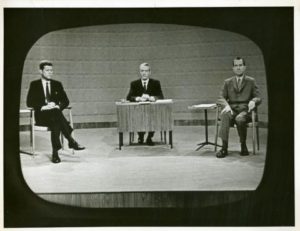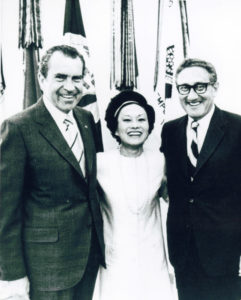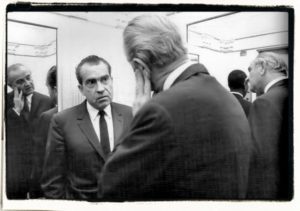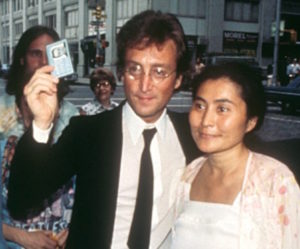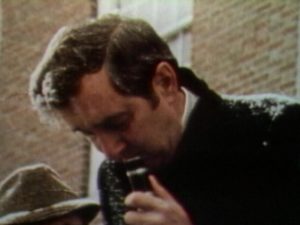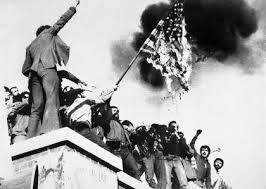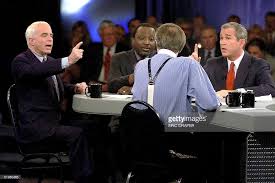 Recently someone on Twitter posted a meme directed at me depicting the Star Wars scene where Princess Leah begs some Empire General not to destroy her home planet of Alderaan because its people “are peaceful people. We have no weapons.” The Imperial General turns to her and says, “Alderaan is a gun free zone?” Of course the Death Star then lasers Alderaan into oblivion. This tweeter thought it was funny.
Recently someone on Twitter posted a meme directed at me depicting the Star Wars scene where Princess Leah begs some Empire General not to destroy her home planet of Alderaan because its people “are peaceful people. We have no weapons.” The Imperial General turns to her and says, “Alderaan is a gun free zone?” Of course the Death Star then lasers Alderaan into oblivion. This tweeter thought it was funny.
That scene from the 1977 movie was portraying a bullying, evil entity preying on an innocent one. But now, with all that’s happened since 9/11 and arguments about war and gun safety, this tweeter seemed to be taking the side of the evil empire and basically laughing at the innocence of the peaceful people.
Now as I sit down to write about the past fifty or so years of American presidential elections, I can’t help but see a parallel.
Many Democrats, me included, have said for years that Democrats need to get a backbone. But I’m still constantly surprised by just how far the Republicans will go to throw sand into the gears of the American government – the government that was designed to be of, for, and by the American people, a description their party’s first president used. Democrats are constantly being caught off-guard, just like Princess Leah.
Current GOP presidential candidate front-runner Donald Trump thinks America is in terrible shape and he has whipped his followers into a lather over issues that are not based in reality. His new book is called “Crippled America”. He shamelessly attacks pretty much everyone.
His attitude does not match that of my many Republican friends, yet Mr. Trump is currently the frontrunner in the race for the Republican nomination by a long shot. How did this happen? Why have politics become such a ruthless game? People of opposing parties used to be able to have civil arguments about our opposing views. We weren’t dismissive of each other. We didn’t accuse the other of being anti-American. But when we look into history, we see that the groundwork for this behavior was laid long ago.
Let’s go back in time and review the presidential elections since 1956. There were plenty of shenanigans performed by both parties long before that. But I think 1956 was the last modern presidential election in which there was a Republican victory that was mostly above board. So moving forward…
1960
In 1960 there was a consensus by many Nixon supporters that John F. Kennedy stole the election. It was the closest election since 1916. JFK received 112,827 more votes than Nixon nationwide; a mere 0.17% margin. Since it was so close there were people on Nixon’s team who thought he should demand a re-count or even an investigation into alleged shenanigans going on in Chicago and in Texas.
The Republican National Chairman, Senator Thruston Morton, tried to convince Nixon to demand a recount. Nixon wouldn’t so Morton went ahead and challenged the results in 11 states, keeping challenges in the courts into the summer of 1961. However, the only result of these challenges was the loss of Hawaii to Kennedy on a recount.
In Illinois, the most recent and fair-minded study (Kallina’s Kennedy v. Nixon) concludes that sufficient evidence does not exist to determine whether Chicago’s Democratic machine stole more votes there than Republicans did downstate. Perhaps why Nixon resisted a recount? – See more at: http://historynewsnetwork.org/article/133484
In Texas, Kennedy’s 46,000 vote margin was determined to be too large to have had vote fraud be enough of a factor to turn the state, even by most of the forces alleging a Kennedy steal.
1964
Lyndon Johnson – president after the assassination of President Kennedy – won against staunch Movement Conservative Barry Goldwater in a historic landslide (61% to 39%). There was no talk of any vote fraud or cheating with such a vote margin (about 16 million votes).
1968
Moving forward to the next Republican win in 1968 we learn that Nixon’s scars from the 1960 loss and the loss when he ran for California Governor in 1962 may have guided his tactics to win the White House. Convinced the Democrats had stolen the election from him in 1960, he seemed to see nothing wrong with going to whatever lengths necessary to steal it back for himself.
Although the Democratic pool of candidates was paralyzed by the assassination of the presumed next president Bobby Kennedy in June of 1968, Nixon still felt compelled to commit treason to insure there would be no “October Surprise” by the Democrats.
The Vietnam War had been going on for too long with too many casualties, with no clear reason why we were there or if it was possible to win. Most Americans already thought it to be an unnecessary and immoral war and protests against it were growing. President Johnson was making a deal with the South Vietnamese to end the war with upcoming talks to take place in Paris. Nixon feared that success in the peace talks would cause him to lose the election.
The FBI had bugged the telephones of the South Vietnamese ambassador and that of Anna Chennault, a Nixon senior campaign adviser. On the tapes these bugs produced, Chennault can be heard convincing the ambassador that the South Vietnamese government should pull out of the talks, stop dealing with Johnson, and if Nixon were elected they’d get a much better deal. On the eve of his announcement of a halt to the bombing in North Vietnam, President Johnson learned that the South Vietnamese were pulling out of the talks.
The recorded evidence the Johnson administration had gathered would have sunk the Nixon campaign. But Johnson decided it wasn’t worth revealing because it would also reveal that the FBI were bugging the ambassador’s phone and that the NSA was intercepting his communications with Saigon. Also, just a few weeks before election day, Democratic presidential nominee Hubert Humphrey was poised to win the election. So Johnson didn’t think it was worth it to announce that a presidential nominee was committing treason, since Humphrey was likely to win anyway.
In the final days of campaigning, Nixon suggested that the Democratic administration’s war policy was in such bad shape that they couldn’t even get the South Vietnamese, who we were there to help, to come to the negotiating table. He won the election by less than 1% of the popular vote. The war went on and was escalated into Laos and Cambodia under the Nixon administration, resulting in 22,000 more American lives lost.
Privately, Johnson (and others) said Nixon was guilty of treason, and had “blood on his hands”.
On June 17th, 1971 Nixon ordered the break-in of the Brookings Institute to steal secret government documents on the Johnson administration’s 1968 bombing halt. On the tapes where Nixon is heard instructing his aides to commit a felony – “Blow the safe and get it” – there’s another voice immediately asking the question, “What good will it do you, the bombing halt file?”. It’s the voice of National Security Advisor, Henry Kissinger. He was a key factor in the scandal. Kissinger can then be heard saying, “You remember, I used to give you information about it at the time”. He had worked for Johnson on an abortive bombing halt deal in 1967. Kissinger used his connections with LBJ’s negotiators to gain access he then used as a secret informant to the Nixon Campaign in 1968 – access to the Paris talks.
Nixon claimed he wanted the documents to blackmail Johnson because he thought Johnson halted the bombings a week before the ’68 election to throw it in favor of Humphrey. But Kissinger tells him on the tapes that this did not seem to be the case. Johnson didn’t set the timeline for the bombing halt, Hanoi (North Vietnam Capitol) did. It seems pretty clear Nixon feared that he was in those documents because other tapes reveal that Johnson had been informed of Nixon’s interference in the Paris talks.
1972
Nixon went as far in 1972 as ordering the deportation of ex-Beatle, John Lennon because Lennon was planning a tour and voter recruitment drive that summer, encouraging people to vote against Nixon if they wanted an end to the Vietnam War. Lennon waged a four year fight that went all the way up to the Supreme Court. He finally got his green card and was able to stay in the U.S.
Then there was Watergate. The Watergate cover up is what finally brought Nixon down, resulting in his resignation from the presidency – the only U.S. president ever to do so. But the Watergate scandal turned out to be much more complicated than the break-in and bugging at Democratic National Committee headquarters in the Watergate hotel and office complex.
The actual shenanigans that set up Nixon’s reelection victory began months before that break in. Although he had earned the name “Tricky Dick” in his devious campaign for the Senate in 1950, the dirty tricks performed by Nixon’s campaign in the 1972 election were as dirty as it had ever gotten up until then. Their actions took away the American voters’ right to choose their president.
A Harris Poll released in August of 1971 showed Democratic presidential candidate Senator Edmund Muskie handily beating Nixon if the election were to be held that day. Muskie was the most feared of all the Democratic candidates, of which there were many. Nixon had been unsuccessful in bringing a recession under control; inflation was…inflating, and the war had not been ended as Nixon had promised in his ’68 campaign — as a matter of fact it had escalated substantially. So a lot of Dems jumped into the pool including the first African American to run for president, New York Representative Shirley Chisholm.
But the four frontrunners were Muskie, former Vice President Hubert Humphrey, fiery old-school (1800s old school) southern democrat and segregationist governor George Wallace from Alabama, and Senator George McGovern from South Dakota.
Deputy Assistant to President Nixon Dwight Chapin hired his law school buddy Donald Segretti to work for CREEP (acronym for the “Committee to Re-Elect the President”). Segretti’s job was to to run a campaign of dirty tricks against the Democrats. He would be paid by Herb Kalmbach, Nixon’s lawyer, from CREEP funds. Keep in mind that CREEP was not a government entity; it was a private entity to raise money for the president’s re-election. Many people who were contributing money to the Nixon campaign had their money used for these dirty tricks without knowing it.
The first task at hand for Segretti was to bring down Edmund Muskie, Nixon’s most feared opponent.
A forged letter attributed to Muskie in which he insulted the language and culture of French Canadians was produced by Segretti. This has become known as the “Canuck Letter”. The Muskie campaign was absolutely blindsided, couldn’t figure out where it came from, and had no way to respond to it.
Segretti also produced faked letters on Muskie letterhead falsely alleging that Democratic Senator Henry “Scoop” Jackson had an illegitimate child with a 17-year-old, and also accused Senator Humphrey of sexual misconduct.
These and other Segretti orchestrations lead to Senator Muskie dropping out of the race. Then the dirty tricksters used stolen Humphrey stationary to forge a letter accusing Representative Shirley Chisholm of being mentally imbalanced, and also portrayed Humphrey as supporting a controversial issue that he in fact opposed. By the time of the Democratic convention, Humphrey had also dropped out of the race.
In May, an attempt was made on George Wallace’s life that left him paralyzed. There are stories of shenanigans occurring that mostly center on the would-be assassin, and George Wallace went to his grave believing Nixon had something to do with the attack. Also, new evidence revealed by Nixon tapes released in 1992 prompted Wallace’s son to request a re-opening of the investigation. But there have been no real investigations in that direction.
The last Democratic candidate left standing was Nixon’s first choice as an opponent, Senator George McGovern.
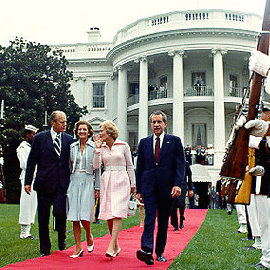
Nixon walks alone, leaving the white house for the last time. His wife didn’t even walk with him, instead clasping arms with Mrs. Ford
Nixon won the election in a landslide but resigned less than two years later as all the evidence of scandals began surfacing. He was pardoned by his un-elected Vice President and successor in the White House, Gerald Ford. His elected Vice President Spiro Agnew resigned because of a bribery scandal in 1973. Had it not been for Ford’s pardon Nixon may very well have served prison time. Don Segretti eventually went to prison and had his law practice license suspended. The man who hired him,Dwight Chapin also served time, as did Nixon’s lawyer who paid Segretti, Herb Kalmbach.
Also jailed were Nixon’s Chief of Staff H.R. Haldeman, U.S. Attorney-General John Mitchell, special counsels to the President Charles Colson and John Erlichman, White House legal counsel John Dean, White House staffers Howard Hunt and G. Gordon Liddy, Security Director of CREEP James McCord and others.
All told, there were 40 government officials indicted or jailed over the Watergate scandal. There would be many more in the next Republican administration.
1976
Republican Gerald Ford lost the election in 1976 to Democrat Jimmy Carter, partially because of the resentment Ford earned by pardoning Nixon. The country was injured and the Vietnam War and Watergate caused many Americans to distrust their government even more so than in the late 1920s when Republican Herbert Hoover and his administration lead led us into the Great Depression.
1980
The era of Iran-Contra…
So there were 40 government officials indicted or jailed from the Nixon administration. By the time the Reagan administration was coming to a close, 138 of his administration officials had been convicted, indicted, or were the subject of official investigations for official misconduct and/or criminal violations.
This story is pretty complex. But it involves the same type of paranoia of the other side winning and the ‘we must prevent that by any means’ mindset that the Nixon campaigns employed.
Here’s the layout:
The United States had been meddling in Iranian affairs since at least the early 1950s when we began supporting Mohammed Reza Shah. We knew him as “The Shah of Iran”. VERY long story short, by 1979 there was a growing revolution against the Shah’s autocratic regime. He was overthrown, fled in exile, and came to his friends the United States. Under a reluctant President Carter’s approval, he was admitted to a hospital for cancer treatment.
On November 4, 1979 Iranian college students invaded and overtook the U.S. Embassy in Tehran, Iran’s capitol city. The students were supporters of the radical Islamic Revolution and occupied the embassy to show their support for Ayatollah Khomeini, the leader of the Iranian revolution. They took 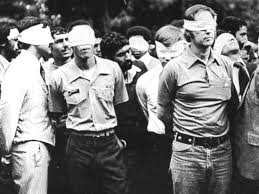 52 American diplomats and citizens hostage inside the embassy, demanding the U.S. send the ex-Shah back to Iran for trial and execution.
52 American diplomats and citizens hostage inside the embassy, demanding the U.S. send the ex-Shah back to Iran for trial and execution.
The Iranian hostage crisis took over the news for months and was a huge problem for the Carter administration. 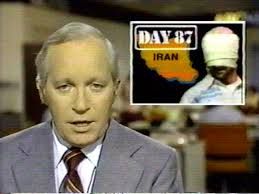 Carter put strong sanctions on Iran and rejected their demands. After more negotiations failed and the Shah found asylum in Egypt (only to die of cancer in July 1980), Carter approved a rescue mission that took place on April 24th, 1980. It was the type of risky mission that could either be a heroic event or a disastrous failure.
Carter put strong sanctions on Iran and rejected their demands. After more negotiations failed and the Shah found asylum in Egypt (only to die of cancer in July 1980), Carter approved a rescue mission that took place on April 24th, 1980. It was the type of risky mission that could either be a heroic event or a disastrous failure.
The plan was hobbled by a dust storm that disabled three of the eight helicopters, with a minimum of six needed to be effective. The mission was aborted, but when one ‘copter was flying in for refueling it crashed into a fuel tanker aircraft. Eight American servicemen and one Iranian civilian died and the two aircraft were destroyed. It was reported as a disaster, mostly leaving out the dust storm part of the story while declaring it a colossal Carter failure, making the Carter administration quite unpopular.
The wheels began spinning in the Reagan campaign during the summer of 1980. Then President of Iran, Abolhassan Bani-Sadr was expecting the Ayatollah’s nephew Reza Passendideh to return from a July 2, 1980 meeting with a new proposal from the Carter administration for a deal to free the hostages, something Bani-Sadr very much wanted to do. Instead, the nephew came back from the meeting with a plan “from the Republican camp”. It turned out that Iranian financier/arms dealer Cyrus Hashemi had instead set up a meeting with Republican lawyer Stanley Pottinger, and Reagan campaign chair, Bill Casey.
There was a different July meeting in Athens between Pentagon officials under the Carter administration and Ayatollah Khumeini officials where a deal was made for the U.S. “in principle” to deliver “a significant quantity of spare parts for F-4 and F-5 aircraft and also M-60 tanks … via Turkey” in exchange for the release of the hostages before the U.S. election.
The Ayatollah, unbeknownst to the Iranian president was playing both sides to get the best deal. The Carter administration stopped refusing to deal with them after the April failed rescue disaster and was offering to sell military spare parts in exchange for the hostages’ release. Although it was a huge compromise of principles, it was a legal deal because Carter was president. The secret deal the Republican officials were making was illegal, and in fact treasonous. Plus, the Republican deal called for a DELAY in the release of the hostages until after the election.
Iranian President Bani-Sadr, who was against the taking of the hostages in the first place and who wanted them immediately released, threatened the Ayatollah that he was going to reveal the secret deal between the U.S. Republicans and Islamic radicals to the public in early September 1980. The Ayatollah threatened him back, urging him not to do so, and as a compromise began to go along with the dealings from the Carter administration side.
But then neighboring Iraq under Saddam Hussein invaded Iran, and disrupted the deal with Carter later in September. Now Iran was in dire need of many more weapons, and the Republicans struck a deal to sell them what they needed in a meeting in Paris in October with William Casey, and former CIA director and Reagan’s running mate George H.W. Bush.
A year later, more evidence of this secret and illegal deal surfaced when a crash occurred on the Soviet-Turkish border of an Argentine aircraft en route from Israel to Tehran with a cargo of US arms. Although two and two were not put together at the time, later information would reveal that these were the early days of what would become known as the “Iran-Contra Affair”, which lead to the legal problems of 138 Reagan administration officials.
1984
The Reagan administration was selling arms to Iran through Israel and then sending the profits to the Contras in Nicaragua, breaking the Boland Amendment which forbade any U.S. financial assistance to the brutal revolutionary “contra” force. That’s the same Boland Amendment that was passed in 1982 and signed by President Reagan. The contras were committing numerous human rights violations including rape and murder, employing terrorist tactics in their fight against the socialist Sandinistas whom the Reagan administration had labeled as communist.
The Reagan administration also successfully sold the voters on a tax plan that sounded great when explained by the soft spoken actor but didn’t really tell the whole story. The 1982 “3 for 1” plan was an easy pill to swallow for the voters. Reagan claimed he’d made a deal with the Democrats to cut $3 of spending for every $1 in raised taxes. But there was a Republican majority congress at the time. He hadn’t made a deal with any Democrats. The Republican congress raised the taxes but the spending cuts never happened, and Reagan would go on to raise taxes a total of 11 times and increase the national debt more than three-fold. They were counting on the fact that most Americans don’t watch these things very closely.
So when the ’84 Reagan re-election campaign asked the question, “Are you better off now than you were four years ago?” the voters’ answer was yes, even though the U.S. economy was about to feel the effects of Reagan’s economic decisions in a very negative way.
There were no accusations of actual vote fraud or dirty tricks ala Nixon in this election. By 1984 Alan Greenspan’s economic plan to increase Americans’ buying power with easy access to credit (translating for most into long-term debt) was in full force. Many called the 80s the “me decade”. Credit policy along with a weak Democratic campaign and the soothing, fatherly voice of the actor/president made the GOP win this one fair and square. But the administration was spending a large amount of time and effort to cover up the fact that they were blatantly breaking the law.
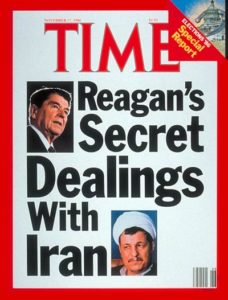 By late 1986 the Iran-Contra Affair had been exposed and was under investigation by Congress and by an independent commission actually appointed by President Reagan. This exposure and ensuing investigations lead him to finally admit on national television to the American people that there was an illegal mess and that he ultimately was responsible. In this address he says, “A few months ago I told the American people, ‘I did not trade arms for American hostages’. My heart and my best intentions still tell me that’s true. But the facts and the evidence tell me it is not.” These words helped earn Reagan the nickname “the Teflon president” because Americans seemed to believe he was somehow blameless, despite evidence to the contrary.
By late 1986 the Iran-Contra Affair had been exposed and was under investigation by Congress and by an independent commission actually appointed by President Reagan. This exposure and ensuing investigations lead him to finally admit on national television to the American people that there was an illegal mess and that he ultimately was responsible. In this address he says, “A few months ago I told the American people, ‘I did not trade arms for American hostages’. My heart and my best intentions still tell me that’s true. But the facts and the evidence tell me it is not.” These words helped earn Reagan the nickname “the Teflon president” because Americans seemed to believe he was somehow blameless, despite evidence to the contrary.
1988
By now the Iran-Contra affair had added importing cocaine to the list of illegal activities being covered up by the administration. A freshman U.S. Senator by the name of John Kerry put his brand new political career on the line, demanding answers and challenging President Ronald Reagan at the height of his power, and at a time Reagan was calling the Contras the “moral equals of the Founding Fathers.” Kerry’s questions represented a particular embarrassment to Vice President George H.W. Bush, whose responsibilities included overseeing U.S. drug-interdiction policies.
But again, a mixture of experienced covert control by former CIA director George H.W. Bush, along with the Democrats again offering a weak candidate for president on their side, led to the GOP again taking the White House.
Another contributing factor was the brutal slur campaign run by Bush’s campaign manager Lee Atwater, a ruthless street-fighting campaign advisor that Bush brought in because of Atwater’s success working for Reagan to beat Bush during the primaries.
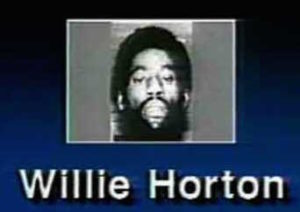 It included the Willie Horton racial scare campaign. There was a weekend furlough program for prison inmates in Massachusetts, the state where Democratic presidential nominee Michael Dukakis was governor. When Horton was out on furlough one weekend he allegedly kidnapped a couple, tied the man up and stabbed him, then raped his fiancé repeatedly. Atwater said, “By the time we’re finished, they’re going to wonder whether Willie Horton is Dukakis’ running mate.” Bush and other GOP operatives repeatedly ran a TV ad showing Horton with a big afro and scraggly beard in a photo taken after he’d been in solitary confinement .
It included the Willie Horton racial scare campaign. There was a weekend furlough program for prison inmates in Massachusetts, the state where Democratic presidential nominee Michael Dukakis was governor. When Horton was out on furlough one weekend he allegedly kidnapped a couple, tied the man up and stabbed him, then raped his fiancé repeatedly. Atwater said, “By the time we’re finished, they’re going to wonder whether Willie Horton is Dukakis’ running mate.” Bush and other GOP operatives repeatedly ran a TV ad showing Horton with a big afro and scraggly beard in a photo taken after he’d been in solitary confinement .
On his deathbed Atwater ended up apologizing for his vile campaign against the Democratic ’88 candidate Michael Dukakis. In 1991 Atwater died of a brain tumor at the age of forty.
Those tactics along with pandering to the evangelical Christians only for their social issue interests, plus inventing “dog-whistle” racist appeal in the south helped place George H.W. Bush into the White House. This president was no actor, nor was he a soothing fatherly figure. He soon lost the trust of Republican voters when he raised taxes again. Somehow President Reagan had a way of doing it without losing that trust. President Bush didn’t, and he would be a one-term president.
1992
Democrat William Jefferson Clinton wins the election with 370 electoral votes to George H.W. Bush’s 168, plus a nearly 6 million popular vote spread even with sex scandals in the tabloids involving Clinton at the time. Certainly no amount of vote fraud or tricks could have created a different result, and there were no reports of such things.
1996
Clinton wins re-election handily with 379 electoral votes to his opponent Bob Dole’s 159, and an 8 million popular vote spread — again, no shenanigans to report.
2000
Senator John McCain, Vietnam Vet and five year prisoner of war swept the New Hampshire primary and was poised to be the Republican presidential candidate. After winning in New Hampshire by 19% he was heavily favored in the next primary in South Carolina in February, 2000.
But the Governor of Texas, failed businessman but eldest son of former president George H.W. Bush was put forth by strong powers in Washington that dated back to the Nixon administration. They brought in a strategist by the name of Karl Rove who proudly claimed his inspiration and mentor to be Lee Atwater, known as the dark prince of negative campaign strategy. This new ruthless player came up with dirty tricks in the fashion of the 1972 Nixon campaign.
There were rumors successfully spread that McCain’s wife Cindy was a drug addict and that he had been brainwashed at the “Hanoi Hilton” (during his five years in captivity as a prisoner of war in Vietnam) to become a Manchurian candidate and destroy the GOP. They also spread rumors that he used prostitutes and had given his wife VD.
But arguably the worst:
“Would you be more or less likely to vote for John McCain if you knew he had fathered an illegitimate black child?” was a question South Carolinians heard as they picked up the phone during the week before that state’s primary. McCain had his newly adopted daughter Bridget, from Bangladesh, with him on the campaign trail.
By appealing to southern racists and socially conservative Christian voters, Karl Rove successfully used McCain’s adopted daughter to bring him down, and Bush won the South Carolina primary and the GOP candidacy for president.
(This nasty tactic affected McCain’s decision to run again in 2008. Bridget found out about the horrible false smear when she googled herself in 2006. McCain and his wife put a large part of their decision to run again in 2008 on how it would affect their daughter. The McCains were repeatedly apologized to by South Carolinians in the 2008 race for had what happened eight years prior.)
In the general election Bush faced Vice President Al Gore. Al Gore proved to be a robotic candidate rich with facts and statistics, but poor in general appeal. George W. Bush was the guy you could have a beer with, although he no longer drank because he was a former alcoholic and born again Christian.
Gore refused to be seen with his president because of Clinton’s sex scandals from a couple years earlier, even though the president’s favorability ratings were hovering around 60% during the summer of 2000.
To add to the Democrats’ disadvantage was the fact that the very liberal Ralph Nader ran as an Independent Party candidate and cut into the votes for Gore. The Republican National Committee in fact ran pro-Nader ads in swing states, knowing he would take votes away from Gore.
Before election night in Florida the GOP prepared the vote rosters by hiring a firm, DataBase Technologies (DBT), for $4 million. DBT was told to use loose parameters to purge possible felons from the voting rosters – just use first four letters of first name, no need to match middle initials, Jr/Sr, date of birth… Approximately 100,000 voters were purged in this way.
In a January, 2001 U.S. Commission on Civil Rights hearing on voting irregularities in Florida, DBT Vice President of Operations, George Bruder gave testimony. In it he said, “We advised the state of the likelihood of a significant number of false positives and made recommendations to reduce those numbers.” Former Division of Elections lawyer, Emmet Bucking Mitchell, who headed up the purge effort replied, “We wanted these lists to be fairly broad and encompassing.”
The hearing determined that 54% of ballots thrown out as “spoiled” were those of African Americans even though they made up only 11% of Florida voters.
As a result many blacks and college students’ names were not on the voting roster even though they’d previously voted in the same precincts. Many of their names were on a felon list even though they’d never been arrested.
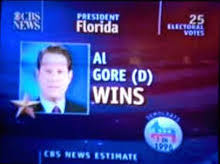 On election night, it was very tight. It all came down to the state of Florida. It was so tight that a mandatory re-count was necessary. But in Florida the Secretary of State – the person in charge of overseeing the re-count – was George W. Bush’s campaign chair, Katherine Harris. And the state’s governor was his brother, Jeb Bush.
On election night, it was very tight. It all came down to the state of Florida. It was so tight that a mandatory re-count was necessary. But in Florida the Secretary of State – the person in charge of overseeing the re-count – was George W. Bush’s campaign chair, Katherine Harris. And the state’s governor was his brother, Jeb Bush.
John “Mac” Stipanovich became senior advisor to Katherine Harris. Some quotes from him on the matter: “I called the senior staff together and I said, ‘we’re not going to break any laws, but I want you to forget about the intent of the laws. We’re going to bring this election in for a landing. “We were going to hold Florida unless they sent in federal troops. “I said George Bush has won this election…we’re going to, rapidly as possible, close off any option; any path that could be followed that produces any result other than that one.” Stipanovich agrees that the obvious intended vote was for Gore if the re-count took place as it should have.
What that meant was that if Bush was going to win, re-counting the votes had to stop.
The machine recount narrowed Bush’s lead of over 1700 down to 357. Key aides and lawyers of Governor Jeb Bush stepped down from their posts on election night and went to work for George W. Bush’s campaign.
Very flawed and confusing ballots were thrown out because it wasn’t clear whom the voter voted for – 19,100 overvotes in Palm Beach County because of “butterfly ballots” – 27,000 votes thrown out in Duval County because of similar “caterpillar ballots” – There were 175,000 votes thrown out in the machine count statewide because of these types of reasons. But voter intention could be determined on most ballots upon physical examination – a manual re-count.
 Florida law required the re-count to happen and the Florida Supreme Court ordered an extension on the re-count after Katherine Harris cut it off. Although Republicans became the “states’ rights” party in the mid 20th century, Bush’s guys decided to take “states’ rights” away and took it to the conservative U.S. Supreme Court who finally ruled against the re-count.
Florida law required the re-count to happen and the Florida Supreme Court ordered an extension on the re-count after Katherine Harris cut it off. Although Republicans became the “states’ rights” party in the mid 20th century, Bush’s guys decided to take “states’ rights” away and took it to the conservative U.S. Supreme Court who finally ruled against the re-count.
Even without the obvious win for Gore in Florida, he still won the national popular vote by 544,000 votes. But Bush was ultimately awarded the presidency because of the electoral college, which Florida would have turned around.
2004
Florida again tried to purge people for being felons, but this time attempted to keep the list secret. When a court ordered them to release the list it was found to have three times as many registered Democrats as Republicans and nearly half of the 47,763 on the list were minorities. After the publicity, the state gave up on using the list.
Michigan Republican State legislator John Pappageorge was quoted as saying, “If we do not suppress the Detroit vote, we’re going to have a tough time in this election.”
This seemed to be the belief generally. Democrats win when there’s high voter turnout. Republicans lose. And this election their presidential candidate was in very bad shape. After waging war on Iraq based on false information, then claiming a few weeks later that the war was over and we’d won, only to have the war still going on years later during the 2004 election, it was thought the Republicans would have a very hard time holding on to the White House.
Perhaps the strongest Democratic candidate was the Governor of Vermont, Howard Dean. He modernized and revolutionized the way campaigns were ran. His fifty-state strategy used the internet in ways it had never been. Campaigns on both sides still utilize some of his techniques.
At a rally the night of the Iowa caucuses, Dean was speaking to a large, crowded room of his supporters and during the heightened grand finale of his speech he was yelling over the loud noise of the crowd.  But the only audio hooked up to the television feed was his unidirectional microphone so the crowd was almost completely cut out. He ended a sentence with an exuberant “Yeah!”, a reaction to the loud cheering and his hoarse voice cracked. Without the sound of the crowd, he sounded a bit manic and the clip was played and ridiculed over and over again. Comedians mocked it. What became known as the “Dean Scream”, or the “I Have a Scream” speech basically sunk his campaign. It’s ludicrous to think of it now, but the event ushered in a new era of political campaigns that are dominated by sound bytes and gotcha moments.
But the only audio hooked up to the television feed was his unidirectional microphone so the crowd was almost completely cut out. He ended a sentence with an exuberant “Yeah!”, a reaction to the loud cheering and his hoarse voice cracked. Without the sound of the crowd, he sounded a bit manic and the clip was played and ridiculed over and over again. Comedians mocked it. What became known as the “Dean Scream”, or the “I Have a Scream” speech basically sunk his campaign. It’s ludicrous to think of it now, but the event ushered in a new era of political campaigns that are dominated by sound bytes and gotcha moments.
In the end the Democrats nominated Senator John Kerry, whose campaign was just as caught off guard by the Karl Rove machine as John McCain’s and Al Gore’s had been. It was as though they’d not done any opposition research on campaign tactics whatsoever. Rove was left to do his campaigning from the dark side with basically no opposition at all.
John Kerry served as officer in charge of a swift boat in the Vietnam War and was awarded the Silver Star, Bronze Star, and three Purple Hearts during his 1969 tour.

John Kerry, then a naval lieutenant, stands with his crewmen on the swift boat he commanded in South Vietnam in 1969.
The job of the swift boats was to patrol thin waterways into Viet Cong-held territories in order to monitor enemy activity and to draw out hostile forces. Kerry’s missions were part of very harrowing adventures in which he was wounded three times, often turning back to save fallen crew members.
In 2004, a 527 group called the Swift Boat Veterans for Truth was formed. They raised a lot of money and ran a lot of TV ads claiming that Kerry didn’t deserve his awards even though the Navy’s Inspector General determined he was properly awarded each medal in a new review. They also claimed Kerry lied about his actions during these missions even though his actual crewmates corroborated Kerry’s stories.
Bush campaign lawyer Ben Ginsberg was also the lawyer for the Swift Boat 527 group. He resigned from the campaign once this fact was made public. It was later proven the 527 group was nothing but a staged smear campaign to discredit Lieutenant Kerry’s military record and was perpetrated by the Bush campaign. Karl Rove of course claimed the Bush campaign had nothing to do with it.
The Kerry campaign was blind-sided by the bizarre move and thought it would all go away if they didn’t give it any more attention. They had no strategy for this or other smears the Bush campaign would perpetrate. But catching a weak campaign off-guard was not the only tactic Rove had up his sleeve this year.
Walden O’Dell, active fundraiser for the Bush campaign and CEO of Diebold, the maker of touch screen voting machines, famously wrote in a 2003 fundraising letter that he was “committed to helping Ohio deliver its electoral votes to the president”. Two 2003 studies of the voter machines prompted by startling past election results proved Walden knew he had the power to do just that.
The reports delivered by Professor of Computer Science Avi Rubin (of Johns Hopkins University) and by the Scientific Applications International Corporation concurred that the Diebold machines do not work, are not secure, and can easily be hacked. Although the State of Maryland commissioned the study, they had only seen a Diebold release of it which had been heavily redacted — a 200 page report truncated to 38 pages. When lifelong Republican and cyber security expert Stephen Spoonamore confronted the Maryland State Board of Elections just before the 2006 midterm elections demanding answers as to why they buried the report, they were unaware of the full report which Spoonamore had access to.
The original report found that the Diebold machines have no controls to detect un-authorized users, stating “failure to have controls for the detection increases the likelihood of system attacks and consequently of system compromises.” Diebold’s release of the report completely omitted this statement.
Spoonamore was interviewed by a former ABC news reporter in 2006 where he describes the “middle man” issue with cyber security. If a third can be routed between the two somehow, computers can intercept, corrupt, or just simply change the data traveling between two other computers. This is how hackers can threaten private information. It’s what he tries to prevent in his business of cyber security.
Computer programmer Clinton Curtis describes in this videoed testimony an assignment he was given by Tom Feeney in 2000. Feeney was a Florida State House Representative and soon to be the state’s House Speaker. He was also the lobbyist and attorney for Yang Enterprises, the company Clinton Curtis worked for. Feeney commissioned Curtis to write a computer program that would easily flip votes in favor of whomever in a way that election officials “would never see”.
He testified that the grave differences between exit polling and final vote results in Ohio in 2004 show evidence of this software being used to hack the machines to change the vote.
If you put both Spoonamore and Curtis’s stories together – use Curtis’s software in a “middle man” computer – you can steal the election.
Let’s go to 11 p.m. on election night, 2004. Florida has just been called for President G. W. Bush. It’s down to the wire. Whichever candidate wins Ohio wins the presidency. Exit polls and current vote counts are showing a pretty large advantage for Democratic candidate John Kerry with counties that traditionally overwhelmingly vote Democrat not yet reporting.
11:14 p.m. – The Ohio servers that are counting the votes crash. This is a scenario that had been anticipated as a possible problem. The vote count got re-routed through computers at a Tennessee company called SMARTech to cover for the crashed Ohio servers.
11:15 p.m. – The Ohio servers come back up. But now the vote count has the SMARTech computers as a “middle man”. The vote quickly begins leaning the other way. Kerry’s exit poll numbers were suddenly reversed 6%, an unheard of event in any election in any developed country.
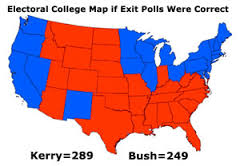 Cleveland’s 4th ward voted 95% for Gore in 2000. In 2004, only 59% for Kerry. An independent analysis analyzed more than 120,000 ballots, 127 polls books, and 141 signature books from Ohio’s 2004 election and found no voter irregularities with exit polling before the 11:14 crash, but every one of the fourteen counties that were counted after 11:14 showed wide irregularities all in favor of Bush.
Cleveland’s 4th ward voted 95% for Gore in 2000. In 2004, only 59% for Kerry. An independent analysis analyzed more than 120,000 ballots, 127 polls books, and 141 signature books from Ohio’s 2004 election and found no voter irregularities with exit polling before the 11:14 crash, but every one of the fourteen counties that were counted after 11:14 showed wide irregularities all in favor of Bush.
SMARTech’s hiring was pushed through by Republican Ohio Secretary of State, Ken Blackwell. Founder of SMARTech, Mercer Reynolds had been the finance chairman for the Republican Party and SMARTech did work for Jeb Bush, the Republican National Committee, and their top client that year was none other than the Bush-Cheney campaign.
2008
Senator Barack Obama wins by more than 9.5 million votes. No vote fraud could have affected this election enough to turn it around.
2012
President Barack Obama wins by nearly 5 million votes, but there’s an interesting moment involving Karl Rove and the Ohio results.
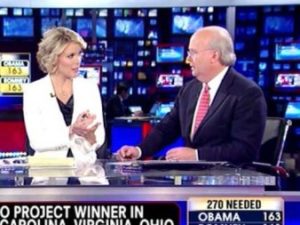
Karl Rove disputes Ohio results with Megan Kelly on Fox News approximately 11:16pm on election night, 2012
Rove, now a Fox News contributor, disputes Fox News’ call at about 11 p.m. that Ohio has been won by President Obama. He says only 74% of the votes have been counted and they shouldn’t jump the gun. Then at 11:14 p.m. the Ohio vote counting servers go down. When they come back up sixty seconds later and Fox reports that Obama has definitely won the state Karl Rove throws a bit of a tantrum, causing a change in their planned broadcast. To appease Rove, Megan Kelly goes down to their number-crunching room with a live camera to confirm the Fox calculations. Rove seems stunned.
The hacker group Anonymous had announced a few weeks prior that they would prevent Karl Rove’s American Crossroads PAC from stealing the election the same way they stole the 2004 election. After the 2012 election they released another message explaining how they accomplished that goal by blocking the “middle man” programmers from entering into the data and manipulating it like they’d done in 2004. Anonymous claimed that the Rove people tried to break through by furiously entering passwords. They tried 105 passwords before giving up.
There has not been a thorough investigation into this fraud attempt because even if the Rove plan had succeeded it would not have been enough to overcome the overwhelming results of the election. Obama would still have won the election handily.
Can the Republican Party ever legitimately win a national election again? They don’t seem to think so. It appears they feel the need to manipulate the presidential election in order to stand a chance of winning it. And they seem to have felt that need in every election since about 1960. There’s clear evidence that they’ve taken deliberate actions to manipulate every election since then. They’ve gone so far as to commit felonies and treason. The Democrats are repeatedly dumfounded by their audacity, much the same way Princess Leah was when the Empire blew up her planet.
This 2016 election cycle may be proof that the GOP has reached a tipping point, as their inability to adjust to modern demographics finally does them in. It’s looking like they may go the way of the Whigs. Let’s hope that whatever entity fills that void, it is a reasonable one that does not feel a need to commit felonies and treason in order to survive.
